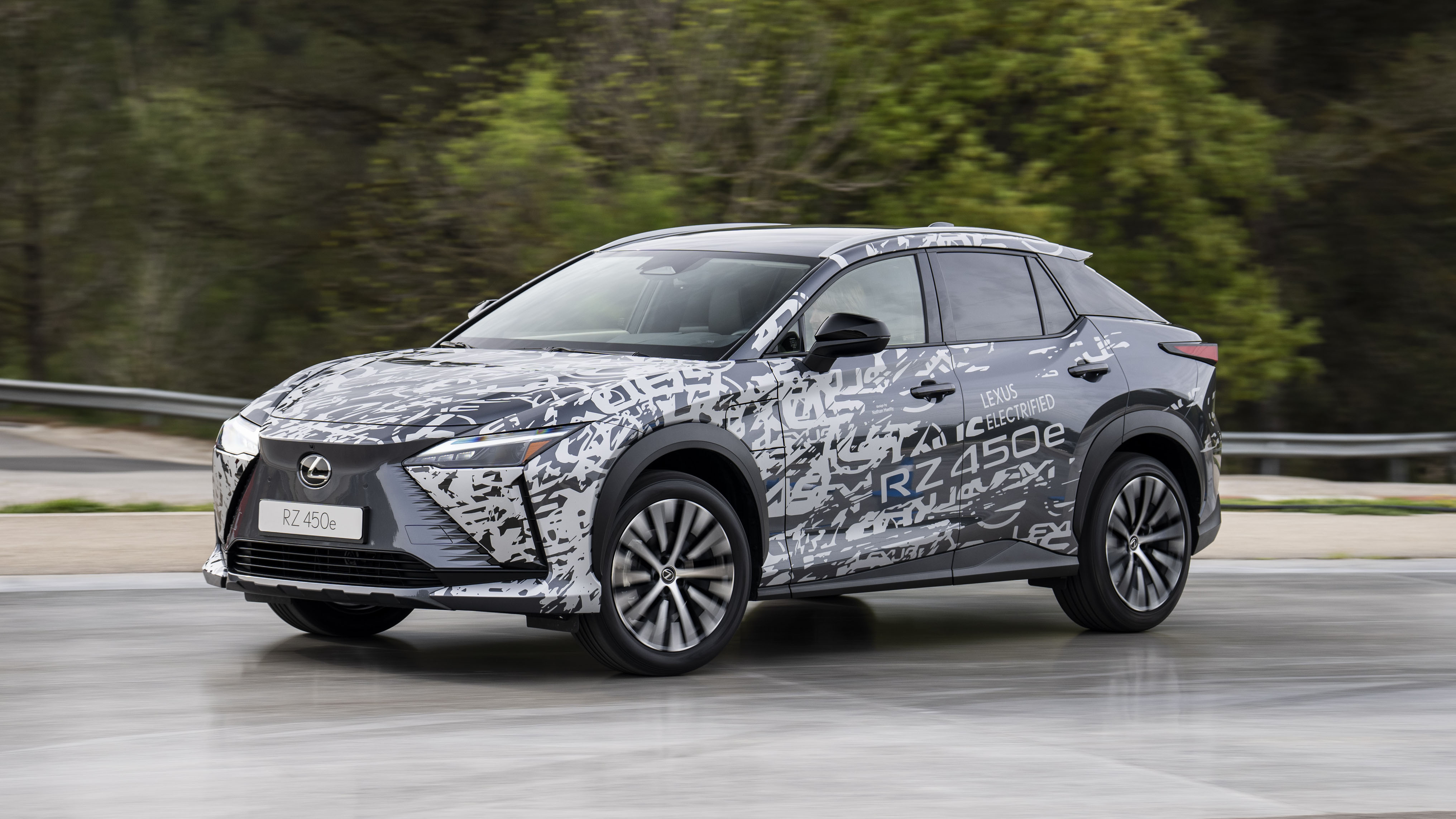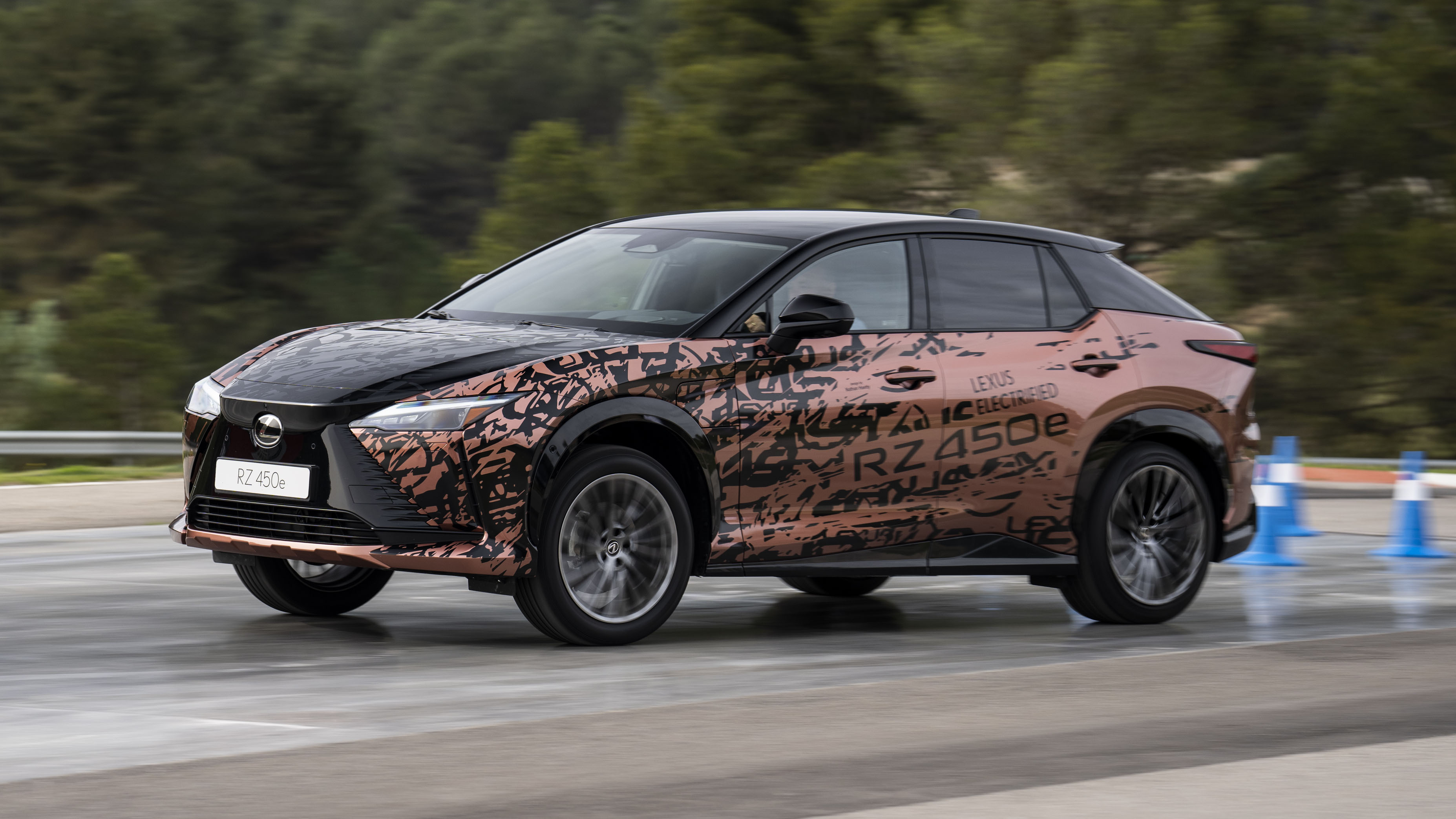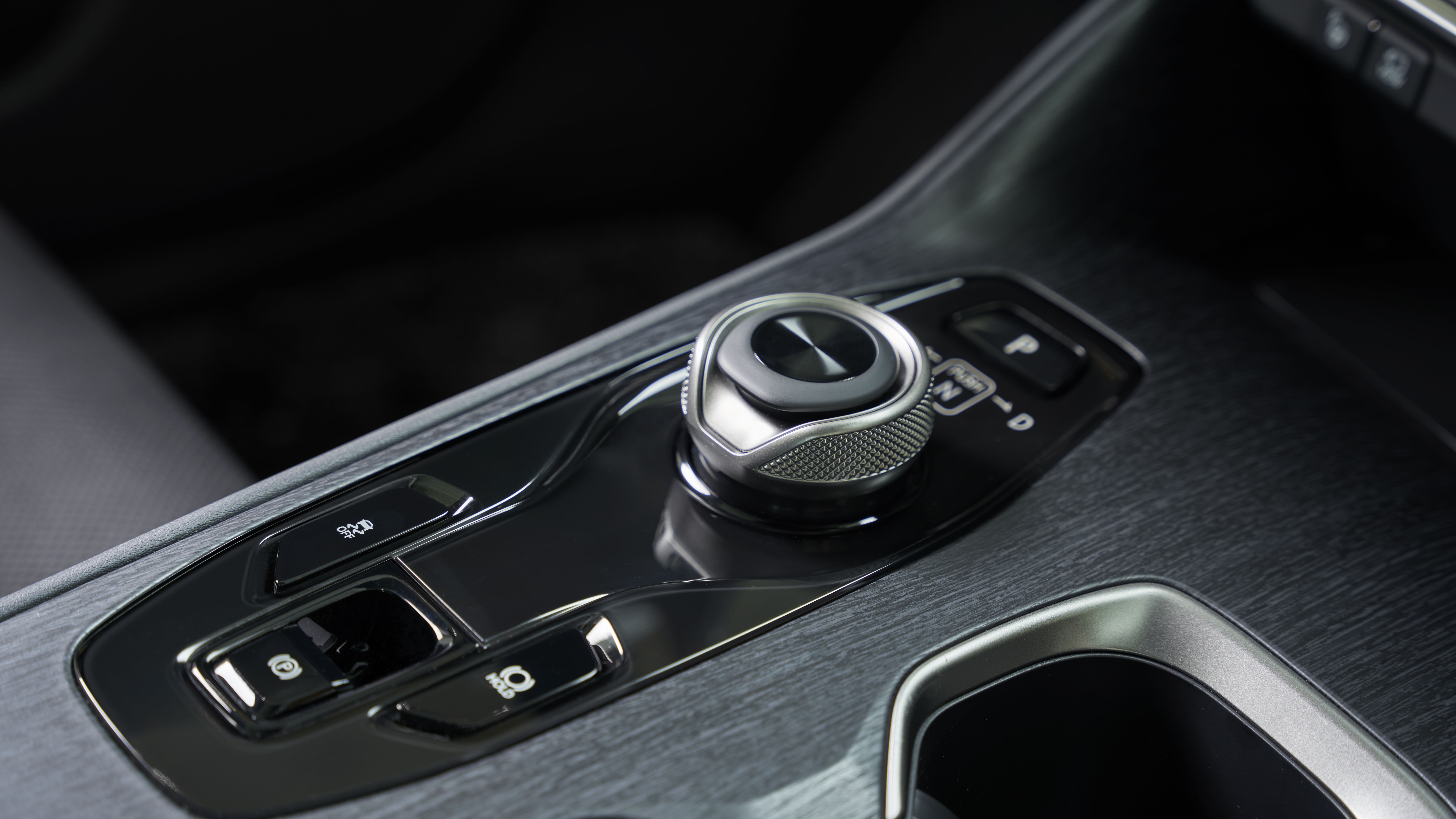
Lexus RZ Prototype review: first test of new 'One Motion Grip' yoke steering
What is this?
We’ve already had a first drive of the Toyota BZ4X prototype. But there were a couple of pending features, and one in particular we were keen on trying first hand: the yoked One Motion Grip steer-by-wire system.
Unlike the Tesla yoke, which simply bolts onto a conventional steering column, the Lexus’s butterfly-shaped helm is connected to the front wheels by wires and electrons only.
This allows the steering ratios and feedback to be changed according to speed and steering angle – and many, many other things – and therefore avoid the awkward hand-over-hand, wrist-knotting problem in tight turns.
The maximum you need to turn it is 150 degrees in either direction, so your hands never need to leave their quarter to three position.
That doesn’t look like a Toyota…
Rather than having another go in the Toyota, our first go with the system was during a Lexus technology deep dive event featuring an early prototype of the RZ450e effectively, but not exactly, the Lexus version of the BZ4X.
What are the differences between the Toyota and Lexus?
Even though they use the same e-TNGA platform, the Lexus engineers reeled off a list of detail changes. Key among these are: Direct4, the dual-motor, front-biased, all-wheel drive system – 201bhp front and 107bhp rear – a heavily beefed-up chassis and suspension plus all new exterior and interior styling.
Models fitted with the yoke also get a repositioned instrument cluster – higher and further from the driver – which aims to make it easier for the driver to switch views from road to dash. It’s just one of many new detail features designed to make the all-electric RZ easier to live with.
Handily, the company had brought along a conventionally steered version – the yoke will be optional, not standard– to allow a back-to-back comparison.
What does it feel like driving with the yoke?
Remarkably natural almost immediately. If you keep your eyes up and focus on the road ahead, as you should, the RZ rolls into, through and out of corners intuitively. There is a slight over-sensitivity right off centre that was noticeable for the first couple of metres, but then your brain recalibrates and it feels direct and faithful.
Some of this is down to the RZ’s chassis being solid and quiet, but the tuning of the system is so fine that there is no sense of the ratio changing – getting faster or slower – at any point in normal driving. We drove the cars on a racetrack, so it was possible to repeat the same corners at different speeds and angles, with both the yoke and the regular wheel. The yoke was consistently more accurate with less fuss.
Top Gear
Newsletter
Thank you for subscribing to our newsletter. Look out for your regular round-up of news, reviews and offers in your inbox.
Get all the latest news, reviews and exclusives, direct to your inbox.
Surely it isn’t perfect?
No, it’s not quite yet. After the laps at the track, we did a few back-to-back laps of a super-tight autocross circuit. This showed up where the real differences lie with a regular wheel.
Instead of windmilling through the cones in a blur of hands using the traditional wheel, the yoke speeds up the steering very noticeably in the last 10-20degrees of travel.
This does achieve the desired effect of turning the sharp corner without your hands leaving the yoke, but you have to be ready for it or you can turn too far, the tyres screeching to remind you of the unreasonable request.
Again, once you’ve used it for a couple of minutes, it becomes normal. But I suggest there will be some car park scars on the rear doors in the RZ’s future if the system remains as is.
On a more positive note, we tried both cars on a skid pan and the yoke-equipped car was by far the easiest to a) get into a skid and b) get it out again. So you could argue that it provides greater active safety. And that Lexus should fit the system to a proper, sideways-loving sports car ASAP.
What about steering feel?
Despite being nicely weighted, there wasn’t any detailed feeling of the tyres’ contact patches on the RZ fitted with the regular steering column. So it wasn’t a surprise to find that the yoke, similarly well-weighted, didn’t offer a huge amount in the way of steering feel either. But this is an SUV not a performance car, so it wouldn't be appropriate here anyway.
The good news is that it will be much simpler to dial it in with the OMG system than the conventional steering rack. As anyone who has used a high-end driving sim will tell you, drive by wire systems can add as much feel as you want. So there is still plenty of time for that to happen on this and future Lexus models fitted with the system.
Think of it this way: everyone used to hate power-assisted steering, now it’s a fact of life. The yoke is just another step in that process
How does the system work?
You wouldn’t expect it to be simple, and it’s not. First of all there is no physical connection between the yoke and the front wheels. Instead of your hands turning a wheel that acts directly on the steering rack, the yoke system sends your inputs via wire to a motor acting on the rack while a second motor provides feedback and feel to the yoke.
But the motors do a lot more than just transmit the driver inputs directly to the rack. They consider everything from speed, vehicle attitude, speed of input, all the way up to and including cross winds and angle of the road before crunching the data and sending the instructions to the front wheels.
Lexus was quick to point out that the system has a full back-up controller and wiring in case the first one fails. Which goes some way to explaining why the cars fitted with the yoke weigh a little more than the ones with the regular steering column.
What’s the yoke for?
That’s a fair question at this point. Why go to all the trouble of fitting a fearsomely complicated system like steer-by-wire in place of a tried and tested set up?
Well, there are lots of reasons, according to Lexus. First up, it allows an economy of movement and ease of use that makes all types of driving easier, less taxing and safer.
The latter not just because it allows you to get out of a skid more swiftly and surely, but also because you never have to cross your arms to make swift direction changes.
Second, it gives more room for design flexibility at the front of the car. Without a column to accommodate, the space can be used to make the interior more spacious.
Third, drive by wire allows the driver to access the newfound capabilities of electric cars. OMG can negate and compensate for any effect of weight increases. But more positively, can work more seamlessly with the other electrical systems in the car to create a more harmonious feel and better driving responses.
We didn’t get into it, but it also undoubtedly makes hands-free driving and, whisper it, autonomous driving, that much easier to instigate and control.
So it’s not just a gimmick. It’s a key part of what Lexus calls its future driving signature, the way its cars handle and respond.
What’s the verdict?
You can’t fail to be impressed by the steer-by-wire technology in the prototype RZ, even if a Luddite part of you feels like it’s dying by admitting as much.
There is an unanswered question of what the system would feel like through a regular steering wheel. But I predict it would be poor. Without limiting the wheel movement, or knowing where the driver’s hands are to start with, it could lead to a royal mess with dodgy results.
We’ve tried active steering racks on various cars with regular wheels and we don't love them. So let’s not go there.
Because for now, we don't need to. Since you will be able to choose your steering type when the RZ is launched, you can either languish in the present. Or you can participate in the future with the yoke. It’s your call.
Featured

Trending this week
- Car Review
BMW 1 Series
- Top Gear's Top 9
Nine dreadful bits of 'homeware' made by carmakers






